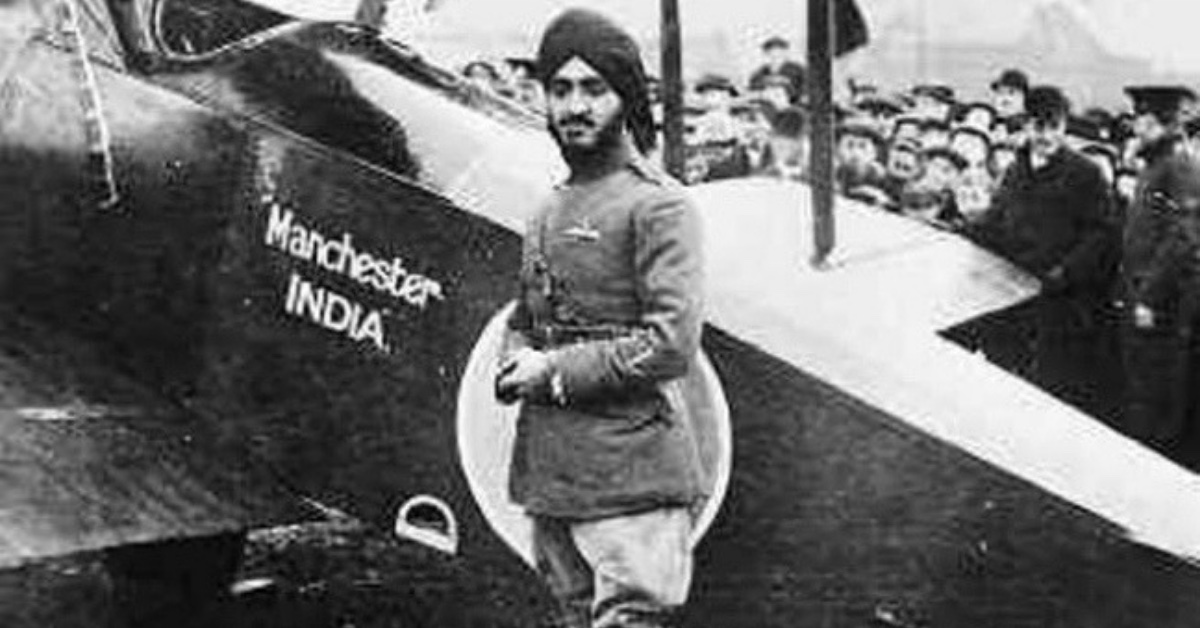One of the pleasant surprises of @1917 is Sepoy Jondalar, played by @nabhaanr. British war movies rarely depict colonial troops, so this is an important step forward. I’d like to propose a fan theory about him based on some things I know about Sikh soldiers in WWI.
When we first meet Sepoy Jondalar, he’s in a truck full of British soldiers who taunt him for barely being able to “speak the language.” Sepoy Jondalar gets the last laugh by doing a funny impersonation of a British officer.
When some of the British men complain about fighting in France because its “not even our country,” Sepoy Jondalar remains silent. Later, he gives the protagonist a long, meaningful look, as if knowing what it feels like to wade through the war untethered. We never see him again.
There were of course some Indian men and/or men of Indian heritage who signed up in Britain, like pilot Hardit Singh Malik, featured in @shrabanibasu_ ‘s great book, and Jogendra Nath Sen, researched by @curatorlucy
Most likely, though, Sepoy Jondalar was in France as part of the colonial Indian Army. We find him alone among British soldiers, perhaps because by 1917, most Indian soldiers were stationed away from the western front.
This leads to my theory: maybe Sepoy Jondalar was ALSO on some important secret order from a general. Could this be the topic of a sequel, 1918?
A few things to set the tone: Indian soldiers endured the same grime, catastrophic violence, boredom and uncertainty as Europeans. They did so while coping with language barriers, racial hierarchies, and an inability to go “home” on leave. (See Gajendra Singh and Santanu Das)
British officers regarded Sikh soldiers as the most loyal and trustworthy due to long-standing assumptions about Sikh “loyalty” in the 1857 rebellion. As a result of this preference, Sikhs regularly made up 20% of the Indian Army despite being less than 1% of the population.
However, maintaining troop loyalty was always difficult, including among Sikhs. In the 1880s some Sikh and Irish soldiers tried to join forces to combat British rule in both countries. Ajit Singh led agricultural protests in the early 20th C, gaining many Sikh soldier supporters.
Balwant Singh, a former Lance Naik of the 36th Sikhs, apparently journeyed to Hong Kong, Vancouver, and California as both
a Muslim faqir (ascetic) and a Sikh granthi with the goal of “preaching sedition.”
a Muslim faqir (ascetic) and a Sikh granthi with the goal of “preaching sedition.”
By WWI, the main concern was the Ghadar party. Consisting of revolutionaries from Punjab, California, and Singapore, Ghadar, or “mutiny” tried to lead a rebellion in the Indian Army (see Maia Ramnath’s work).
Many Ghadar members were active or former Sikh soldiers. They plotted a “conspiracy” for troops to rebel across Punjab, and also contributed to the Singapore Mutiny in 1915 (see Heather Streets Salter)
Nonetheless, Sikhs continued to bear a disproportionate burden to fight overseas, often through coercive recruitment in Punjab. The (British) Government of India decided to make a concession, in 1917, that Sikh soldiers be allowed to carry Kirpans in and out of uniform.
These swords were one of the five markers of identity for men initiated into the warrior fraternity known as Khalsa. Sikhs who hoped to serve in the army usually had to prove Khalsa identity to be recruited.
Kirpans and swords were sometimes used to show devotion to service. Dafadar Nathan Singh of the 2nd Lancers wrote a Gurmukhi (Punjabi) verse from France that declared that “Once a Sikh takes the sword in hand / He has only one aim—victory.”
He accused another soldier, Jemadar Chur Singh, of failing to be “a Sikh of Guru Govind Singh” because he sat “in fear inside the trench.” When Chur Singh grew angry and “drew his sword and went forward,” the Dafadar described his death as a transition from coward to “martyr.”
While a knife features prominently in an earlier, pivotal scene in 1917, we do not see Sepoy Jondalar’s kirpan, even though this would have been an important part of a Sikh soldier’s identity in the war years. Had he handed it over to an officer in preparation for his mission?
Perhaps it was concealed for an assassination? My theory/proposition? Sepoy Jondalar was being sent behind German lines to pose as a deserter and rescue Indian POWs. Maybe, like Chur Singh, he had been scared in the trenches and volunteered to redeem himself or his family?
PLOT TWIST! Like Balwant Singh, Sepoy Jondalar was actually in disguise, gaining British support only to rally soldiers against the war. Seeing another war-weary soldier on a lonely one-man mission made him recognize himself and the difficulty of picking sides in this war.
To close: it remains interesting that the one Indian soldier depicted in the film was a Sikh. The cover of my book, Faithful Fighters, features Sikh reenactors to reflect the fact that whenever Indian/colonial troops are included in art or commemoration, it is usually Sikhs.
Yet Nabhaan Rizwan, the actor portraying Sepoy Jondalar, has self-identified as a non-practicing Muslim. In reality, there were far more Muslims in the Indian Army than Sikhs. Positive depictions of soldiers of all faiths are vitally necessary to understand the war.
If/when Sepoy Jondalar shows up in the (imaginary) sequel, 1918, I hope we see him rejoin his fellow soldiers in the Indian Army - Hindus, Muslims, Sikhs - and experience more about their stories.
Also, shout-out to @amanmadra who put together this great resource http://www.empirefaithwar.com/ ">https://www.empirefaithwar.com/">... about Sikhs in WWI.

 Read on Twitter
Read on Twitter


